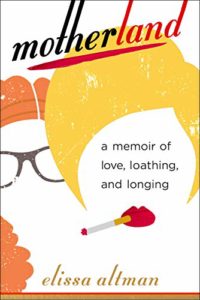 Every year over Christmas break, I devote myself to one kitchen project that takes a long time to complete and is seriously labor intensive, or both; one year it was making preserved lemons (a failure). Last year, it was making cassoulet (a success). This year, for reasons I don’t quite understand, it was bread.
Every year over Christmas break, I devote myself to one kitchen project that takes a long time to complete and is seriously labor intensive, or both; one year it was making preserved lemons (a failure). Last year, it was making cassoulet (a success). This year, for reasons I don’t quite understand, it was bread.
Not just any bread.
Sourdough bread.
For the last 10 days, I’ve had an assortment of bowls and one large Mason jar sitting on the shelf above my stove, filled with mixtures in varying states of disrepair. One gave off a noxious, yeasty odor so foul that the dog just stood in the doorway of the kitchen, refused to come in, and stared at me, wagging. The contents of the bowl had to be thrown out, and I considered burying it in the backyard. Another, which seems to be more promising, is a concoction of water and unbleached flour, whisked together, and stirred a few times a day; it has to be treated a bit carefully, and I’ve been following strict rules about scooping out half of the sludge and replacing it with newer sludge. Every day. For a week.
Sometime during the course of the holiday, I got it into my head to read The Laurel’s Kitchen Bread Book, which is all about whole grain baking, and this is what I’m aiming to do, ultimately. We live very close to a wonderful food store that sells a spectacular loaf called a 12-grain sourdough miche; it’s remarkable. It’s chewy but soft with a crunchy but still supple crust, and filled as it is with grains and seeds and twigs, it manages to be light as a feather. It’s produced by the Bantam Bread Bakery, which is one very good reason to come to Connecticut (among others). It’s also around $7.50 a loaf, and in my house, it’s gone in about a day and a half. So, on the one hand, I would like to be able to turn out a sourdough whole grain miche that is a close facsimile of the one that comes from Bantam. On the other hand, I’d be happy to just settle for producing something that doesn’t weigh 9 pounds, or has the consistency of a doorstop.
Anyway, I cozied up on the couch with the book, and read a few chapters; one of the starter recipes called for little more than rye flour, a single granule of yeast, some water, and time. It seemed too good to be true, so I put the starter together. Twelve hours later, it was supposed to “look like pancake batter,” and it did, if the pancake was the kind I used to eat in Woodstock in the late 1970s. It actually looked like brown Quick-crete, and had a thick rime of dried whole grain skin on its surface. The book said to just mix the stuff back in, so I did. Twelve hours later, it had a second thick rime of dried whole grain skin on its surface. So I mixed it back in. Again.
“Why don’t you just use Jim Lahey‘s recipe?” Susan asked. She had recently brought home Lahey’s wonderful book, the appropriately titled My Bread (since everyone and their brother has furtively laid claim to the no-knead process that catapulted Lahey and his Sullivan Street Bakery to fame, on the wings of Mark Bittman’s Minimalist column in the New York Times); we’ve had a lot of luck with Lahey loaves–they’re impressively stunning, chewy, and easy to put together, assuming you don’t mind that pesky little 18 hour waiting period.
“Because I want to experience the time and work that goes into producing a sourdough loaf,” I told her.
“But Lahey’s loaves also take time,” she responded.
And she was right. That’s the thing about bread that I find so intriguing: unless you use a bread machine–that heavy contraption that showed up in the early 1990s, was all the rage, and now is sitting in more attics across America than Cabbage Patch Kids–bread baking takes time. Even if you aren’t kneading it, it still takes time. Think about this bit of dharma: the no-knead method of bread baking is considered the quick-and-easy, no-sweat, shortcut way to creating something delicious. It’s what most of us want: the remarkable, artisanal-style result without the labor required to produce the real thing. I mean, let’s not kid ourselves–this is a metaphor for the way most of us live. We want the glory without the work. This method has fooled thousands of people (myself included) into thinking that bread baking is a simple exercise that can be thrown together mindlessly. The truth is, of course, that just because it offers us an easy way around an otherwise labor intensive process, it still requires patience; a lot of patience. Quick and easy? No way. The joke’s on us.
And if it’s sourdough you want, you’re in for a long, long wait. If it’s whole grain sourdough you’re after, you might as well pitch a tent for a month or two. Trees grow faster. The fact is that bread baking–no-knead or sourdough– forces you to slow down, to stick close to the kitchen, to focus on something other than yourself and the work you have to do, the news, the movies you’re planning on seeing, and all of the resolutions you intend to keep in the coming year. You have no choice with bread. Like any good co-dependent relationship, if you don’t give it what it needs, it won’t give you what you want.
Last night, after 3 days of stirring the rye starter, I decided that it was time to make a loaf. I grabbed my largest bowl, dumped in 3/4 cup of starter along with a yeast/water mixture and a few cups of whole wheat flour, like the recipe told me to. I tried to stir, but was unsuccessful. Susan brought up the Kitchen Aid stand mixer–the one with the same horsepower as a Volkswagon–and we attached the dough hook, plopped the dough into the bowl, flipped the switch, and stood there, watching it go round and round. Eventually, the mixer started to give off an acrid sort of odor–the kind that small engines emit right before they explode.
“Maybe it’s supposed to be this way,” I said, reading the recipe. After all, the consistency was exactly as it was meant to be, according to the description.
I shaped the dough into three “hearty loaves” and baked as instructed. Here is the result:
The taste is quite good, but not so sour. Each petite loaf weighs about 3 pounds. That’s 3 loaves at 3 pounds.
3 loaves x 3 pounds = 9 pounds
As dense as a plank of wood.
So, on it goes. This is clearly a process and there’s definitely a learning curve. It’s okay; I have nothing but time.








Yup, making yeast-based things has always been my Waterloo. The Leahy method was the only way I ever produced an edible product (and a quite yummy one at that). My favorite yeast-based product is/are cinnamon buns but every time I tried to make them from scratch they came out like little hockey pucks. Hours of work and nothing to show for it…I wanted to throw the damn things across the room but was afraid of putting a ding in my walls with these little missiles. So, I broke down and, indeed, bought a small bread machine. I never use it to make bread, only dough and man oh man my cinnamon buns are killer. Ask the girls, they love them as much as I do.
I still swear by my bread machine…for the entire process. I find magic in the picking of the ingredients and the resulting product. It may take hours but the aromas coming from that little machine are a joy to behold and I can walk away and do something (anything) else while I wait.
Remember that old Paul Bunyan story about Sourdough Sam? the bunkhouse cook who loved sourdough, yet never quite got it right? One morning, after weeks of baking with sourdough, plus a steady rain, the entire logging camp rose to about 3 miles above where it had been. Seriously, there's a great bakery in downtown Nashville called Provence Breads and Cafe that makes wonderful round sourdough loaves. Their starter is from the le Four Boulangerie in Bonnieux, France.
I feel your pain. I've had a ton of trouble making bread lately. Never had much trouble when I baked in the States (didn't attempt sourdough), but since moving to Mexico City, I have failed almost every time. Either it doesn't rise enough or the crumb is too dense. And I'm always worried that I didn't knead it well enough. Last weekend, I finally realized: The only way to figure this out is to make a loaf of bread every weekend. So that's my new plan.
Anyway, my point is: Have you heard of a sourdough starter made with red cabbage? Saw it on Michael Ruhlman's site a while ago. A lot of people seem to have had success with it.
http://blog.ruhlman.com/2009/07/simple-sourdough-starter.html
Thanks everyone for your comments….
Wow,3 pounds? That's how heavy an average human brain is,but seriously, I have to hand it to you for your patience and persistence with making this.sourdough.com has great tips for making sourdough bread.-Alisa@Foodista
Elissa, I've never heard of a starter that was ready in 3 days. Most take about two weeks of steady feeding to be ready to make bread, but really they pick up stream after a couple of months.
An easier solution: Go to said favorite bakery, ask them if you could buy a nut size piece of their sourdough starter. Tell them how much you love their bread. They will probably give you the starter. This has worked for me every time (I even got starter from Jim Lahey this way).
Feed it for 1 day and make said loaf, but keep back a bit of starter in your refrig so you have it for next time. Refresh at least twice before baking.
You'll miss the romance of beginning your own starter, but you will get a good start.
Secondly, begin with white flour — whole grains are much harder to master, much harder still to make light. Or at most use 15% whole wheat flour with your white.
Third, rye flours are variable, some are light, others dark and coarse. Most cookbooks do not specify, since every brand is different, so ratios of water to flour tend to break down. Your starter looks way too thick. On weight basis, I use 1 to 1 water/rye in my rye starter but it will get more perky if you use 1.3 water to 1 rye. (More water gets faster activity).
Finally, like Beard in the 60s, Laural's bread book was cutting edge in its day. No longer. There are better places to get what you're after, me thinks.
Sam
http://www.chewswise.com
Thanks so much Sam–really lovely of you to post at length. The whole process is confounding!